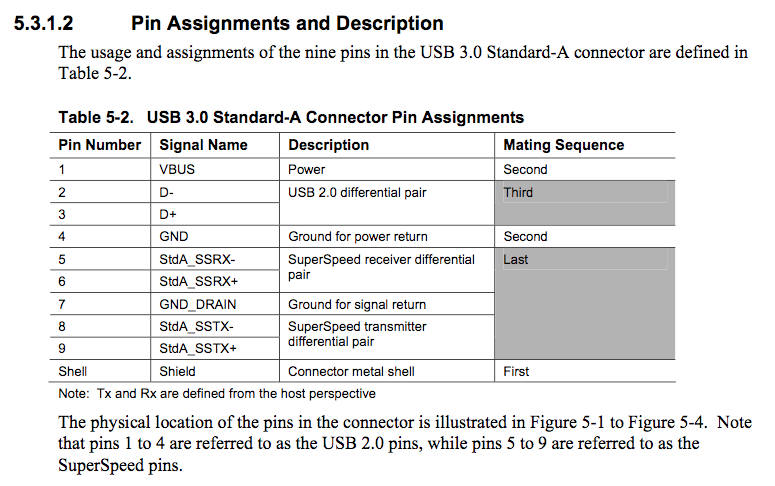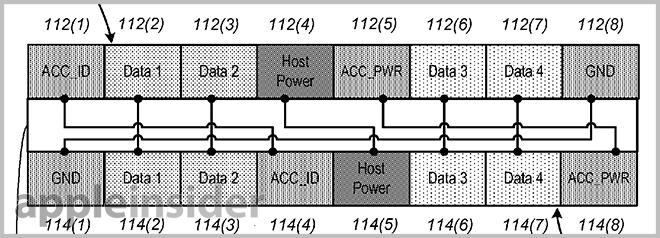

This avoids any shorting hazard while the plug isn’t inside the connector.
The pins on the plug are deactivated until after the plug is fully inserted, when a wake-up signal on one of the pins cues the chip inside the plug. The device watches for a momentary short on all pins (by the leading edge of the plug) to detect plug insertion/removal. All plugs have to contain a controller/driver chip to implement the “adaptive” thing. At least one (probably at most two) of the pins is used for detecting what sort of plug is plugged in. The outer plug shell is used as ground reference and connected to the device shell.  All 8 pins are used for signals, and all or most can be switched to be used for power. According to Apple, it as an all-digital connector and "features an adaptive interface that uses only the signals that each accessory requires and also is 80% smaller as well as orientation independent." (For the old connector, see 30-pin Connector.) It was presented by Tim Cook at an Apple Special Event on 12 September 2012. Siri Remote and Apple Pencil also use Lightning.
All 8 pins are used for signals, and all or most can be switched to be used for power. According to Apple, it as an all-digital connector and "features an adaptive interface that uses only the signals that each accessory requires and also is 80% smaller as well as orientation independent." (For the old connector, see 30-pin Connector.) It was presented by Tim Cook at an Apple Special Event on 12 September 2012. Siri Remote and Apple Pencil also use Lightning. 
#LIGHTNING CONNECTOR PINOUT PRO#
Lightning is the "new" connector supported by iPhone 5 and newer, iPad mini and newer, iPad (4th generation) and newer, up to but not including the 2018 iPad Pro line, ( iPad Pro (11-inch) and iPad Pro (12.9-inch) (3rd generation)), and iPod touch (5th generation) and newer. Lightning connector from aerial, front, top, and socket angles







 0 kommentar(er)
0 kommentar(er)
